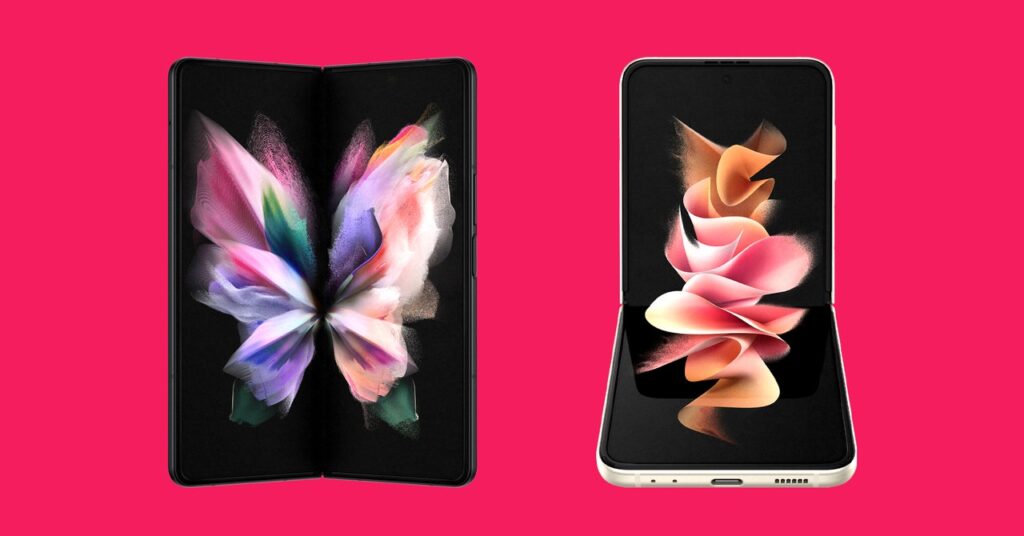Folding Phones Are the New 3D TV
Depending on who you ask, smartphones with folding screens—like the two models Samsung just released—are either a gimmick or the next…


In a live-streamed media event on Wednesday morning, Samsung revealed a pair of new high-end phones, two sleek smartwatches, and a set of jelly-bean-like earbuds. If you weren’t paying close attention to the announcement, that’s OK; with everything else going on in the world right now, smartphone launch events might have moved to the bottom of your list of priorities.
They haven’t slipped down Samsung’s list, though. The electronics giant is the globe’s largest shipper of smartphones, and it still really, really wants you to pay attention to smartphone launch events. It wants to show that technology only moves in one direction. It wants you to consider how a new phone might fit into your life. Better yet, it wants you to consider how a folding phone might fit into your life, and it has bent the laws of mechanical engineering to make it fit into your pants.
Enter two new folding mobile phones. The Galaxy Z Fold3 and Galaxy Z Flip3 were both revealed at yesterday’s virtual event. The former folds open like a book, and the latter folds over like an old flip phone (hence the name). But wait, what’s new about a phone that flips open, a Luddite might wonder, rightfully. To see the innovation in Samsung folding phones, one needs to look at the displays—bendy, carbon-reinforced polymer layers that unfurl when you want a big screen and snap shut when you don’t. Your iPhone can’t do that.
Samsung’s newest foldables are even more impressive than the folding models that came before them. (The company first started shipping foldable phones in 2019, after years of development.) And yet, folding phones are still the 3D TVs of the smartphone world: birthed with the intention of swiveling your head toward a product at a time when the market for that product has softened. They’re technically complicated. They’re expensive. And their usability depends a whole lot on the way content is displayed on them, which means manufacturers could nail all the tech specs and still must wait on software makers (or entertainment companies) to create stuff to fill these space-age screens.
All this does not bode well for the future of foldable phones, though some analysts are more optimistic.
An Open and Shut Case
What Samsung has done with this new hardware is remarkable. The first Galaxy Fold was delayed due to a faulty display, and even after it was rereleased, it felt thick and emitted mildly arthritic sounds when you opened and closed it. The Galaxy Z Flip, released in early 2020, was the Fold’s fun, experimental younger sibling. It folded downwards like an old Motorola Razr (which was also rereleased as a foldable). It had a new scratch-resistant display. It was purple.
But both were ridiculously expensive—$1,980 and $1,380—and aside from the innovative displays, they didn’t have all the latest and greatest components. The next foldable, the Z Fold2, released in fall 2020, had a larger display and supported 5G, but it still got knocked for not offering Samsung’s best smartphone cameras.
The new Galaxy Z Fold 3, on the other hand, is possibly the most Samsung phone ever. It costs $1,799. Its display has a super high refresh rate. It’s more water-resistant, and, Samsung claims, many percentage points more durable. It works with the S Pen stylus, made possible by a nifty two-panel digitizer that lives underneath the flexible screen. The Fold3’s trio of rear cameras are complemented by an under-display camera.
The companion Flip 3 updates Samsung’s clamshell design, and it’s still cute as hell. It too is supposedly more durable this time around, and the tiny display on the closed cover of the phone has been enlarged. The price has dropped too: The old Flip was $1,380, but the new model starts at $999.




